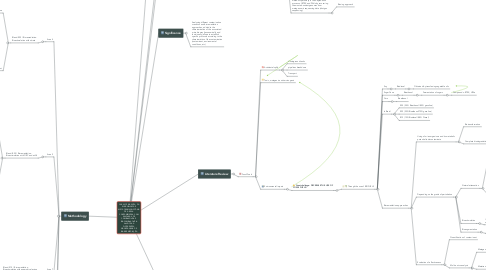
1. Methodology
1.1. Area 4
1.1.1. Blend: E25 / Bioremediation: Bioestimulation with nitrate
1.1.1.1. Baseline
1.1.1.1.1. Total DNA Extraction
1.1.1.1.2. Total mRNA extraction
1.1.1.1.3. Physicochemical characterization
1.1.1.2. Treatment
1.1.1.2.1. Total DNA Extraction
1.1.1.2.2. Total mRNA Extraction
1.1.1.2.3. Physicochemical characterization
1.2. Area 5
1.2.1. Blend: B20 / Bioremediation: Bioestimulation with ORC and airlift
1.2.1.1. Baseline
1.2.1.1.1. Total DNA Extraction
1.2.1.1.2. Total mRNA extraction
1.2.1.1.3. Physicochemical characterization
1.2.1.2. Treatment
1.2.1.2.1. Total DNA Extraction
1.2.1.2.2. Total mRNA Extraction
1.2.1.2.3. Physicochemical characterization
1.3. Area 7
1.3.1. Blend: E10 / Bioremediation: Bioestimulation with anaerobic electron acceptos
1.3.1.1. Baseline
1.3.1.1.1. Total DNA Extraction
1.3.1.1.2. Total mRNA extraction
1.3.1.1.3. Physicochemical characterization
1.3.1.2. Treatment
1.3.1.2.1. Total DNA Extraction
1.3.1.2.2. Total mRNA Extraction
1.3.1.2.3. Physicochemical characterization
1.4. Area 8
1.4.1. Blend: B20 / Bioremediation: Natural Attenuation
1.4.1.1. Baseline
1.4.1.1.1. Total DNA Extraction
1.4.1.1.2. Total mRNA extraction
1.4.1.1.3. Physicochemical characterization
1.4.1.2. Treatment
1.4.1.2.1. Total DNA Extraction
1.4.1.2.2. Total mRNA Extraction
1.4.1.2.3. Physicochemical characterization
1.5. Metabolic reconstruction (Binning Approach)
2. Significance
2.1. Analyzing different contamination scenarios and bioremediation approaches, added to the characterization of the associated microbiomes (taxonomically and functionally) allows to establish specific protocols according to the characteristics of the contamination (contaminant, environmental conditions, etc.)
3. What is the problem?
3.1. Fossil fuels dependency
3.1.1. Increase in the use of biofuels
3.1.1.1. Biofuels pollution cases
3.1.1.1.1. Spills accidents
3.1.1.2. New kind of contamination
3.1.1.2.1. The biofuels biorremediation process is poor understanding compare with the fossil fuels
4. Why Do I Want research about this?
4.1. We have to be prepare with bioremediation protocols for biofuels pollution cases
4.1.1. Microbial community able to degrade these kind of blends
4.1.2. Metabolisms involved in the biofuels degradation
4.1.3. Bioremediation approaches
4.1.3.1. Monitored Natual Attenuation
4.1.3.2. Bioestimulation
4.1.3.3. Bioaugmentation
5. Objectives
5.1. Geral Objective
5.1.1. Evaluating the effect of different bioremediation treatments in areas contaminated with blends of biodiesel/diesel or ethanol/gasoline, on the composition and structure of the microbial community and on gene expression, through the use of an integrated approach of multi-omic techniques (metagenomics and metatranscriptomics), focusing on genes involved in aerobic and anaerobic metabolism of hydrocarbon degradation (BTEX and PAHs).
5.1.1.1. Specific objectives
5.1.1.1.1. I. Evaluate the diversity, composition and taxonomic structure of the prokaryotic microbial communities present in the impacted soils, before and after the execution of the remediation treatments.
5.1.1.1.2. II. To evaluate the functional diversity of the prokaryotic microbial communities present in the impacted soils, before and after the execution of the remediation treatments. The emphasis will be placed on the genes and aerobic and anaerobic pathways of BTEX and PAH degradation of members of the prokaryotic community.
5.1.1.1.3. III. To evaluate the expression profile of the genes involved in the degradation of BTEX and PAHs in the treatments with the best performance in the removal of each contaminant
5.1.1.1.4. IV. Determine metabolic pathways, activation mechanisms and electron acceptors, used for the degradation of BTEX and PAHs in contaminated areas.
5.1.1.1.5. V. Correlate the data obtained from the taxonomic, functional and expression profile with the physical and chemical data of the areas of interest.
5.1.1.1.6. VI. Reconstruct the most important metabolic pathways in the degradation process of BTEX and PAHs by recovering the most abundant genomes from metagenomic sequencing data (shotgun sequencing).
6. Hipótesis
6.1. Which microorganisms and metabolism are involve on the biodegradation of blends of fossil fuels and biofuels submitted to different bioremediation approaches?
7. Literature Review
7.1. Fossil Fuels
7.1.1. Accidental spills
7.1.1.1. Underground tanks
7.1.1.2. pipelines breakdown
7.1.1.3. Transport
7.1.2. Toxic, mutagenic and carcinogenic
7.1.3. Environmental impact
7.1.3.1. Great challenge: DECREASE THE USE OF FOSSIL FUELS!
7.1.3.1.1. Through the use of BIOFUELS
